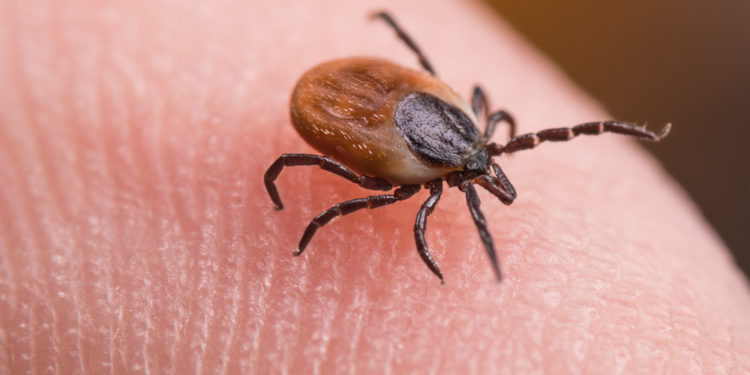Ticks – 8 facts you should know
Every year in spring and summer the topic of ticks recurs, and among the dangers lurking for us from these arachnids the most frequently mentioned are Lyme disease and tick-borne encephalitis. No wonder – every year there are recorded in Poland about. 12 to 20 thousand. new cases of the former and several hundred cases of tick-borne encephalitis. Unfortunately, patients often come forward only at an advanced stage. The problem is growing, and these aggressive arachnids have already established themselves even in large cities. Learn the 8 most important information to better protect yourself from ticks.
- Ticks reach a size of 3-4 mm. They wait for their prey usually under blades of grass, in bushes or under leaves. The period of their increased activity may begin as early as March. The intensity of winter may be important in this case. The shorter and milder this time of year turns out to be, the higher the tick population will be in spring and summer, thus increasing the risk of infection after an encounter with these arachnids. Because it should be remembered that up to half of them carry Lyme spirochetes or other dangerous diseases – there are large regional differences.
- Ticks have made their home for good even in the centers of large cities. This is confirmed, for example, by dog owners who bring “souvenirs” from their daily walks in parks, gardens and squares. So you don’t have to walk through an overgrown forest to return from a walk with a tick. Proper protection on a daily basis is very important. If we have such an opportunity, let’s also reach for special preparations, the so-called “Geocaching”. Repellents (it is advisable to choose those without the harmful substance DEET) that repel ticks. Despite this basic protection, do not forget to thoroughly inspect your body when you return home. To check the back or neck, let’s involve loved ones to make sure we haven’t missed any “stowaways”.
- Ticks are blind. They identify potential prey by body heat, carbon dioxide from exhaled air and smell. As a place of insertion they choose those parts of the body where the skin is thinnest – under the knees, armpits, on the scalp, behind the ear, in the groin. The moment of insertion is painless, so we often do not know we have been attacked.
- Let’s remember about proper clothing, in the situation when we go for a walk, even to the park with the dog. Despite the high temperature, we should not then be tempted to go there in sleeveless shirts, short pants or with our heads uncovered.
- If we find a tick, it should be removed as soon as possible. Comments Dr. hab. med. Ernest Kuchar, an infectious disease specialist at LUX MED Group:
We should do this mechanically, for example, with tweezers with curved tips. The most important thing is to grasp the tick by the head as close to the skin as possible and not to squeeze its torso. The U.S. Centers for Disease Control and Prevention recommends that the tick be removed by pulling it perpendicular to the skin, without rotational movements (conducive to detachment or crushing the torso), in the direction opposite to the position of the mouth apparatus, gradually increasing the force of the. The area after removing the tick should be disinfected, hands and tweezers should be thoroughly washed.
- Reddening of the skin and inflammatory reaction is the usual reaction after a sting. It should subside within a few days. Dr. E. Kuchar adds:
However, if it does not disappear, but instead enlarges over time, taking the shape of a ring or oval patch surrounding the site of the bite, it is probably erythema migrans – a characteristic symptom of Lyme disease. Migratory erythema may be accompanied by mild general symptoms: weakness, worse mood, fever and enlargement of the surrounding lymph nodes. If you experience these or other worrisome symptoms, you should visit your doctor immediately so that he or she has time to look at the skin lesion before it changes in appearance or disappears. It is a good idea to take pictures of the lesion after it appears. Untreated erythema migrans usually disappears spontaneously within 3-4 weeks.
- In Poland, the most common tick-borne disease, right after Lyme disease, is tick-borne meningitis, with 200-300 people diagnosed annually. Podlaskie and Warmińsko-Mazurskie provinces show the highest five-year average incidence rates of KZM – 9.74 and 2.55 cases per 100,000, respectively. residents. This may be related to the higher percentage of green areas in these regions. It is worth noting that up to one in six ticks can carry the KZM virus. LUX MED Group expert adds comments:
Tick-borne encephalitis usually follows a two-phase course with a period of apparent recovery. In the first phase, it resembles the flu and manifests itself with malaise, increasing weakness, headache and muscle pain in the limbs and soreness of the eyeballs. Nausea, vomiting and abdominal pain may occur. In the second phase, neurological symptoms appear – dizziness, neck stiffness, irritability, hypersensitivity to stimuli, disorders of consciousness up to nerve paralysis, paresis, sensory, speech and swallowing disorders, coma.


